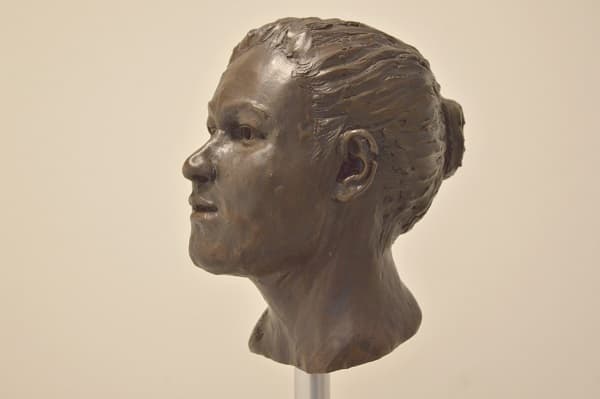Scientists Sequence First Irish Genome - Age Old Questions Answered, New Ones Asked
For all good reasons, Irish genetics is a mystery. With each study that comes to light and as more and more aspects are encompassed, what genetic scientists are faced with is a more daunting task to determine the truth of our ancient friends around the globe.
A team of geneticists from Trinity College Dublin and archaeologists from Queen’s University Belfast has sequenced the first genomes from ancient Irish humans and the revealed information has asked as many questions as it has answered. The genome of a 5200-year-old farmer woman based near Belfast, and those of three men from the Bronze Age, some 4000 years old, were studied and the results, published in the international journal Proceedings of the National Academy Sciences, USA, are likely to set a benchmark.

Reconstruction of an ancient Irish woman
The origins of the Irish have always been dealt in speculations and assumptions, and the uncertainties have only been furthered by studies of extensive and dynamic migration scenarios. Traditionally, the Irish are referred to as Celtics- people of a cultural group first evident in the 7th or 8th century B.C. who expanded in Europe north of the Alps in the 3rd to 5th century B.C. period- but genetic examination has shown that the Irish were not direct descendants from the “Keltoi†of Central Europe. They were rather close relatives of the inhabitants living in the Basque Country, north of Spain.
Irish genetics are generally observed to be an assimilation of diverse European gradients- with world maxima for the variants that code for lactose tolerance, the western European Y chromosome type, and several important genetic diseases like haemochromatosis (excessive iron retention) and cystic fibrosis.
The team was surprised to see how different the Neolithic woman, who was found in Belfast in 1855 and lived over 5000 years, was from the three of the male skeletons analysed, who were found near the Rathlin Island in 2006. Such a stark distinction clearly signals a major migration in the 1000 years that separated them. The woman possessed genome of predominantly Near Eastern origin while the genome of the men suggest that their ancestors may have come to Ireland from the Pontic Steppe.
What is still unclear from the results is the population upheaval that resulted in Ireland, and the subsequent entry of humanity from different parts of the globe, an entry of race, culture, language and much more.
Source: #-Link-Snipped-#
A team of geneticists from Trinity College Dublin and archaeologists from Queen’s University Belfast has sequenced the first genomes from ancient Irish humans and the revealed information has asked as many questions as it has answered. The genome of a 5200-year-old farmer woman based near Belfast, and those of three men from the Bronze Age, some 4000 years old, were studied and the results, published in the international journal Proceedings of the National Academy Sciences, USA, are likely to set a benchmark.

Reconstruction of an ancient Irish woman
The origins of the Irish have always been dealt in speculations and assumptions, and the uncertainties have only been furthered by studies of extensive and dynamic migration scenarios. Traditionally, the Irish are referred to as Celtics- people of a cultural group first evident in the 7th or 8th century B.C. who expanded in Europe north of the Alps in the 3rd to 5th century B.C. period- but genetic examination has shown that the Irish were not direct descendants from the “Keltoi†of Central Europe. They were rather close relatives of the inhabitants living in the Basque Country, north of Spain.
Irish genetics are generally observed to be an assimilation of diverse European gradients- with world maxima for the variants that code for lactose tolerance, the western European Y chromosome type, and several important genetic diseases like haemochromatosis (excessive iron retention) and cystic fibrosis.
The team was surprised to see how different the Neolithic woman, who was found in Belfast in 1855 and lived over 5000 years, was from the three of the male skeletons analysed, who were found near the Rathlin Island in 2006. Such a stark distinction clearly signals a major migration in the 1000 years that separated them. The woman possessed genome of predominantly Near Eastern origin while the genome of the men suggest that their ancestors may have come to Ireland from the Pontic Steppe.
What is still unclear from the results is the population upheaval that resulted in Ireland, and the subsequent entry of humanity from different parts of the globe, an entry of race, culture, language and much more.
Source: #-Link-Snipped-#
0
